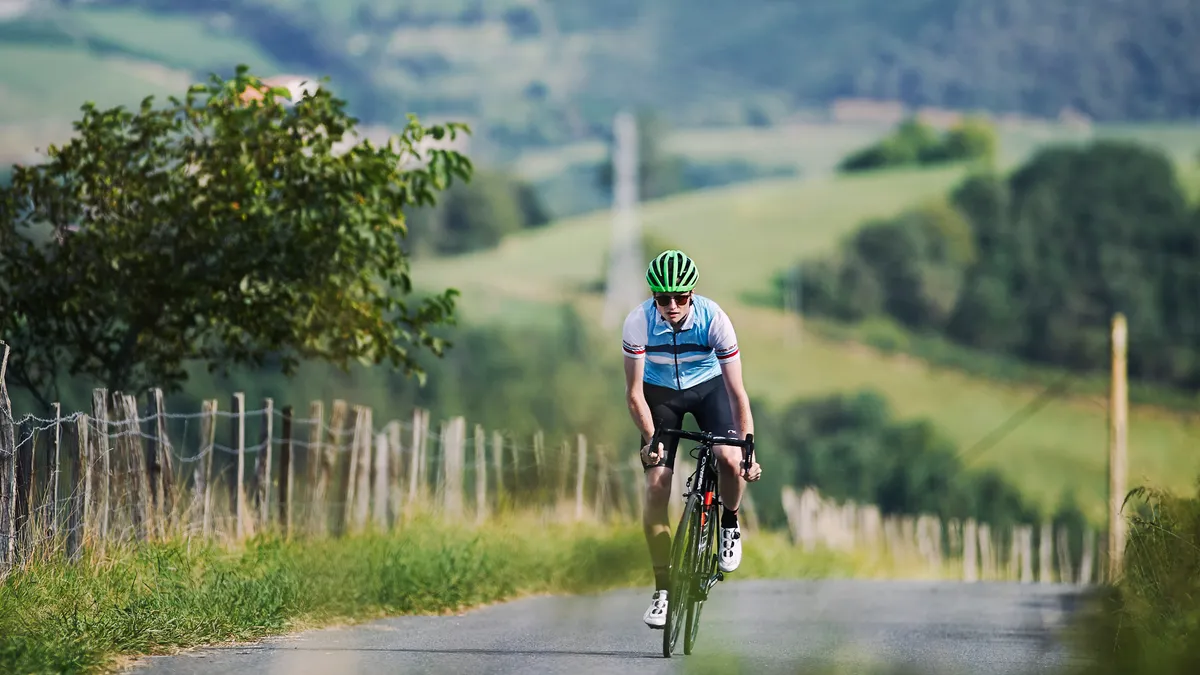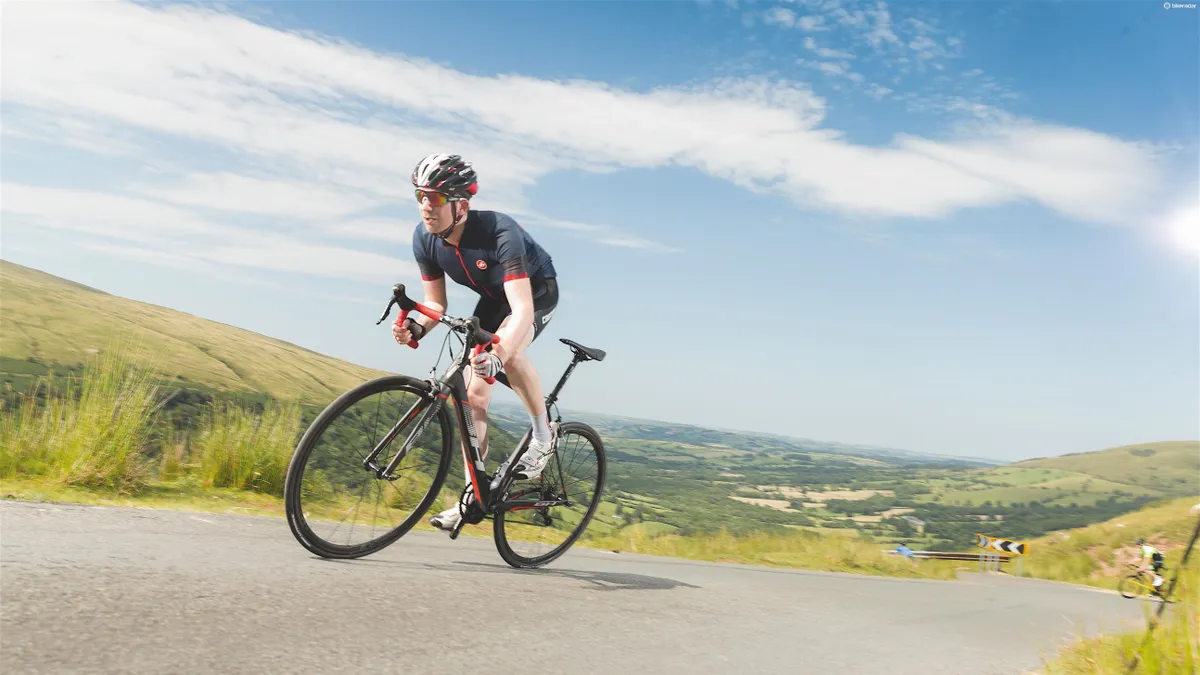You've just finished your local group run and thought: "I was really good today, I made those guys hurt" or maybe "I was struggling today, wow that was hard". Or perhaps it was something in between. Maybe you completed your local time trial or favourite training circuit and your time was better or maybe not as good as last time.
- UK readers: can you help us get more people on bikes? Whether you’re a keen cyclist or a complete beginner, we’d love you to get involved in our Get Britain Riding campaign, in association with B’Twin. Click here to sign up!
So you are wondering, "I've been training OK but am I actually getting any fitter?"
Rides like these can sometimes be false indicators of your fitness and form. That's because fitness changes should only be assessed using an objective measure (the most objective measure being sustainable power output).
A group run or even a mass start race is measuring yourself against others, so who knows how their form is relative to yours? And time trial or circuit times are significantly affected by weather conditions on the day, and changes in conditions affect different riders to different degrees so the time gaps between you and the other riders can also vary.
So how can you really know the answer, without investing in expensive equipment? Simple. Go and find a hill to climb. Ride up as hard as you can and time yourself.
There are a few tricks to making this a reasonably objective measure, but done right it can be a very useful guide for monitoring fitness changes and certainly more reliable than group rides and time trials.
Hill climbs are ideal for the purpose since, due to the physics of riding a bicycle, they reduce the influence of many of the uncontrollable variables that affect speed on flatter or variable terrain: wind and air density for instance.
Hill climbing speed relies much more on the hill's gradient (which doesn't change each time you ride the same hill) than your ability to generate power (which is what we want to know) and your weight (which is easy to measure). Besides, hills are good training anyway, so why not?
Before you test yourself
Testing fitness is, by its nature, a very strenuous activity and as such it is very important that you are not suffering from any virus, infection or related illness, or have recovered fully from any such infection or illness (e.g. not within several weeks of such an episode).
Smokers, older (over 35 years) or overweight riders should all consult their medical practitioner before embarking on such activity. And those who have high blood pressure, suffer from heart and/or vascular disease or airway restriction diseases such as bronchitis should not attempt such efforts. If in any doubt, consult a suitably qualified medical practitioner.
Finding a hill
Here are some guidelines on choosing a suitable hill climb:
- The hill needs to be long. It is best if it will take at least 10 minutes to climb. 20 minutes or longer is better.
- The hill needs to be reasonably steep. By that I mean an average gradient of at least 5 percent and preferably 7–8 percent. For example, a 7.5 percent gradient means 75 metres of altitude gain for every kilometre of road ( 400 feet of altitude gain per mile). It also helps if the gradient is reasonably consistent. Gradient variations are OK but flat and downhill segments reduce the reliability of results.
- A sheltered climb is best. While climbing reduces the effect of weather conditions on the result, they still have an impact, so sheltered climbs are best. The lesser the gradient, the more important this is.
If you're lucky enough to have such a hill within riding distance, then there are a few more points to note:
- Have set start and end markers to time yourself against. Don't forget what and where they are for next time. Use well known markers that won't be removed next time you visit.
- Avoid exceptionally windy days. While climbing reduces the influence of wind on your time, it still plays a part, so if it's unusually windy, perhaps it's not the best day for it.
- Use the same bike set up each time. Make sure your carry-on load (mass of bidons, spares, stuff in pockets etc) is roughly the same. The only element of total mass that should vary is yourself. And have gearing on your bike suitable for the climb.
- Go as hard as you can but don't blast out of the blocks! Have a good warm up beforehand and ride yourself into the hill by being a little conservative at the start. Going too hard too early will result in being forced to slow dramatically in order to recover, before being able to lift the effort further. This won't give you your best time.
- Do the test after 2–3 days of rest, easy or recovery riding. Use the same routine in the days prior to the test each time.
Your hill climb time is a direct reflection of your power to weight ratio. A faster time means a higher ratio and hence improved fitness.

Once you have a benchmark time, then you'll know next time whether you really are fitter. By noting your own body weight each time, you will be able to determine how much of that improvement is due to being leaner (or not) and how much is due to producing more (or less) power. It's best to do tests on a regular basis, every six to eight weeks is about right.
So, get out there, set a benchmark time and see if you can beat it after a block of training. Otherwise, you may not really know how your form and fitness are progressing.
Sustainable power output
The most objective measure of cycling fitness is the power a rider can sustainably generate through the cranks of a bicycle.
Often (and most practically) this is expressed as the maximum average power a rider can generate for a given duration, e.g. 1-hour.
An even better indicator is the ratio of sustainable power to body mass. Hence a measure of one's power to weight ratio is typically used to rate fitness. Normally this is expressed as watts per kilogram of body mass (W/kg). This ratio is the primary determinant of one's ability to climb hills and mountains. Top professional riders (e.g. leading climbers in the Tour de France) are producing power in the range of 6W/kg for 20 minutes or more.
Sustainable power to weight ratio is also closely correlated with general cycling performance, although many other factors do come into play and their influence depends on the event type such as: aerodynamics for time trialling; anaerobic abilities, tactics, strategy, skills and experience for various other forms of racing; as well as overall endurance for long events.
So unless you have access to a sports science facility or are using an on-bike power meter, such as a Powertap or an SRM, or a well calibrated cycling ergometer, then the next best thing is to time yourself riding up a hill climb.
Estimates of power output on a hill climb can then be made by using a good online calculator such as Tom Compton's Analytic Cycling site.
